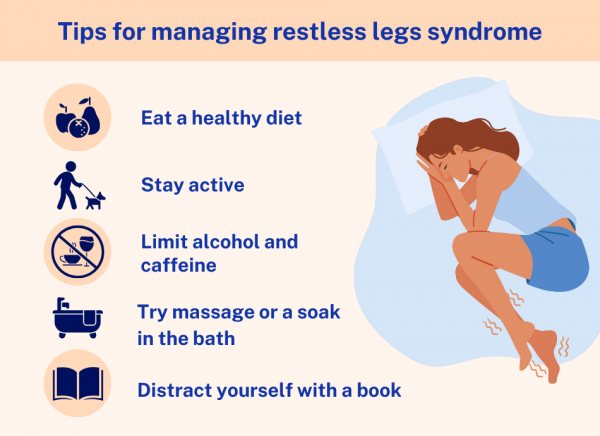Restless legs syndrome (RLS) is a condition where you have an unpleasant feeling or sensation, usually in the calves of your legs, that creates a strong, uncontrollable urge to move your legs.
- The symptoms are usually brought on by rest and are worse in the evening or at night.
- Movement such as walking or stretching brings relief for a short time, but the symptoms usually return once you settle into a restful state.
- Both legs may be affected or one may be worse than the other.
- Sometimes other parts of your body, such as your arms or lower back, may be affected.
RLS can affect your sleep and lead to tiredness, feeling sleepy or trouble concentrating. If this happens, talk to your healthcare provider about how to manage your symptoms.
Note: Nocturnal (night-time) leg cramps are different from restless legs. A single jerky movement in the early stages of sleep is common in one third of people and is normal.







